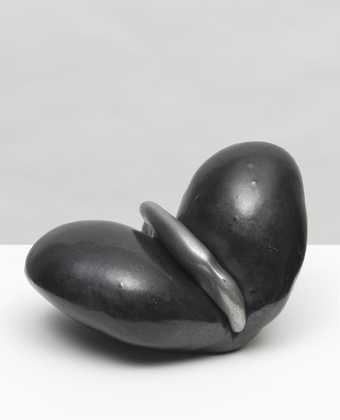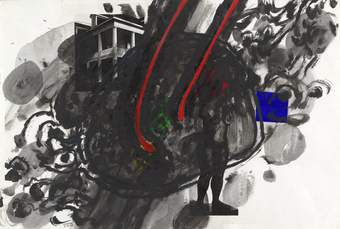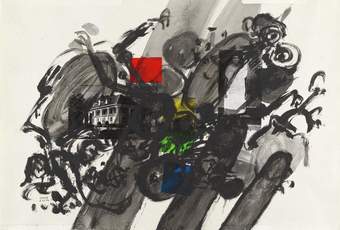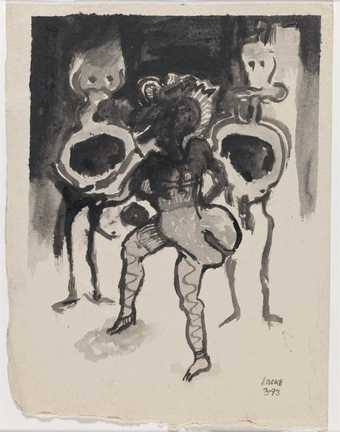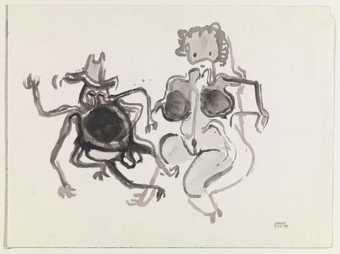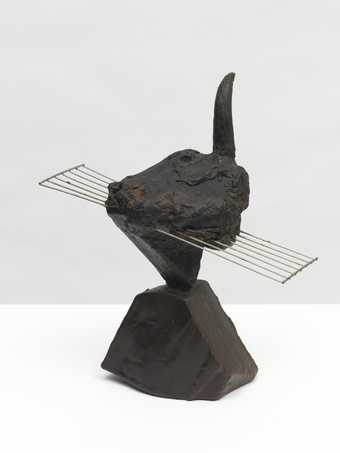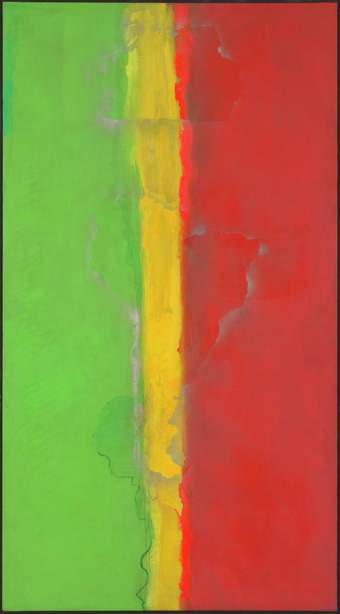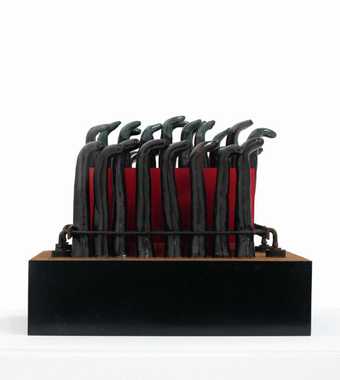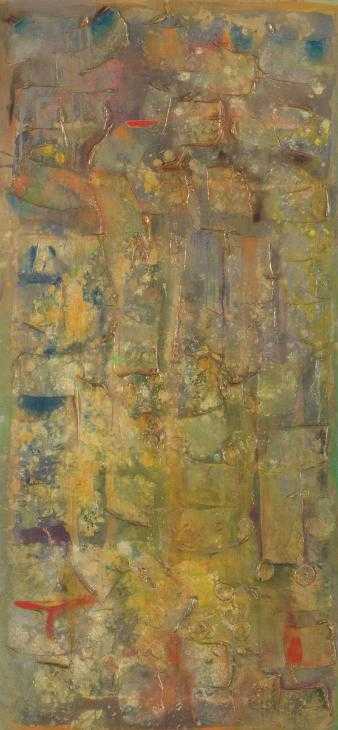
- Artist
- Donald Locke 1930–2010
- Medium
- Acrylic paint, canvas, metal and steel on canvas
- Dimensions
- Support: 1172 × 1655 mm
- Collection
- Tate
- Acquisition
- Purchased with funds provided by The Joe and Marie Donnelly Acquisition Fund 2021
- Reference
- T15769
Display caption
This work is titled after the Guyana sugar plantation Dageraad. In 1763 it was the site of Guyana’s first rebellion of enslaved people. Locke addressed the themes of plantations in works from 1972–9 and he considered them some of his most important. They function as visual metaphors for the corrosive plantation system of labour that shaped the history of the artist’s native Guyana under Dutch and later British colonial rule. The abstract minimalism of this painting reflects the brutal uniformity of colonial rule and slavery, which reduced people and land to expendable commodities.
Gallery label, January 2022
Does this text contain inaccurate information or language that you feel we should improve or change? We would like to hear from you.
You might like
-
Donald Locke Folded Seed with Clip
1972–74 -
Donald Locke Twin Form
1976 -
Donald Locke Mansions of the South
1996 -
Donald Locke Mansions of the South
1996 -
Donald Locke Mansions of the South
1996 -
Donald Locke Untitled
1993 -
Donald Locke Untitled
1993 -
Donald Locke The Remains of Captain Bull #1
2001 -
Sir Frank Bowling OBE RA Sacha Jason Guyana Dreams
1989 -
Sir Frank Bowling OBE RA Who’s Afraid of Barney Newman
1968 -
Donald Locke Trophies of Empire
1972–4 -
Donald Locke Plantation K-140
1974 -
Sir Frank Bowling OBE RA Rachel IV
1989

